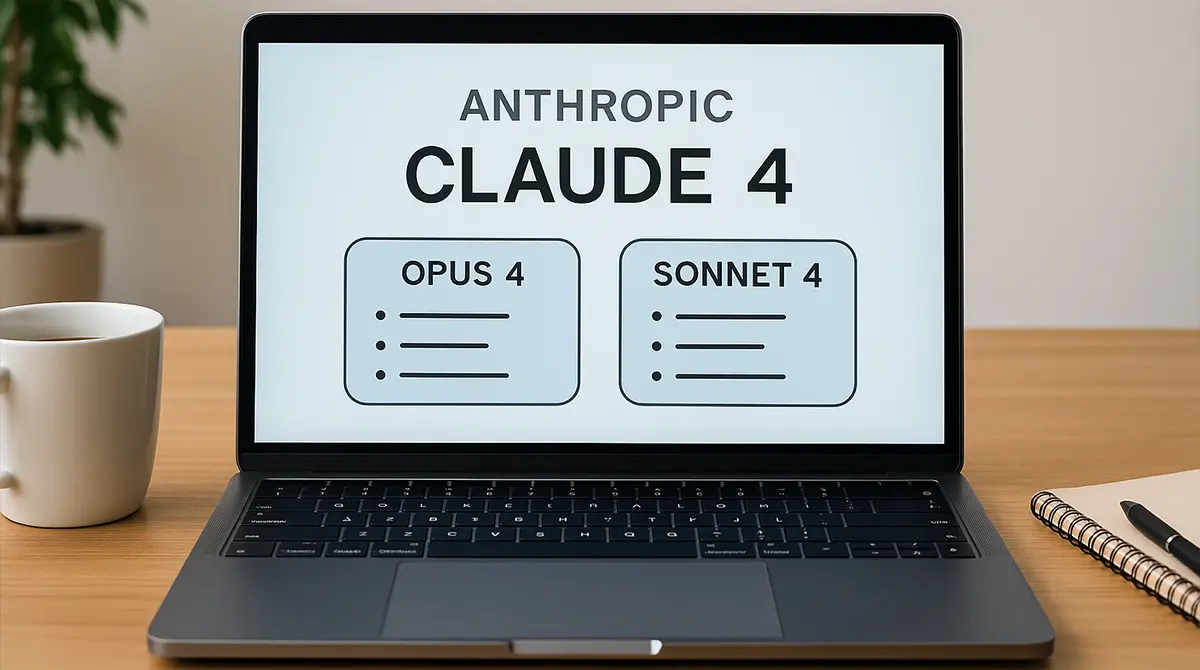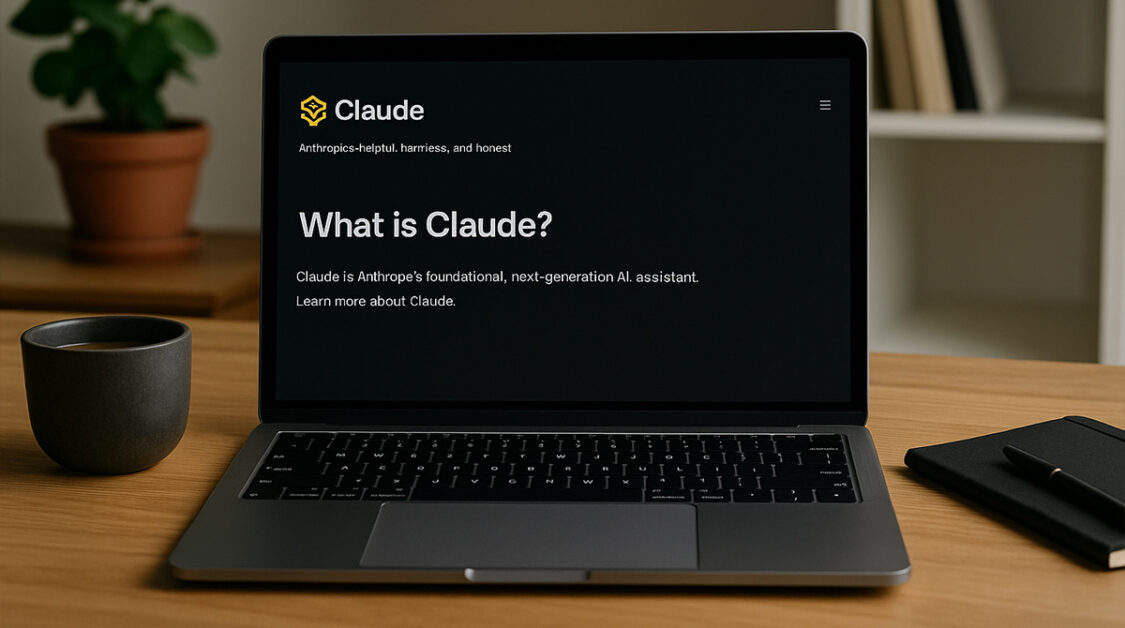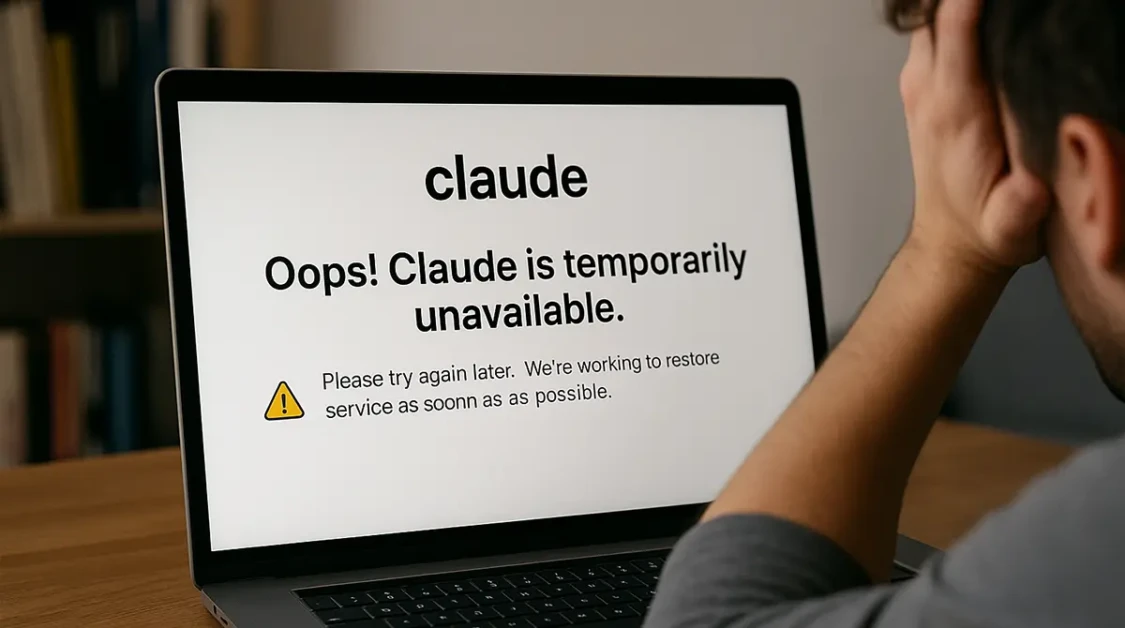The Claude 4 Series is here, and it is already redefining what people expect from a conversational AI suite. Anthropic quietly shipped Opus 4 and Sonnet 4 to early partners in late 2024, and by February the wider wait-list opened. Early reviews show sharper reasoning, lower operator cost, and expanded multimodal talent that outruns Claude 3.5 Sonnet without draining budgets.
Claude 4 Overview
The release keeps the familiar three-model lineup but tightens the tiers. Opus 4 sits at the top, aimed at heavy workloads like scientific analysis and large-scale code migration. Sonnet 4 slots into the balanced middle, stealing the spotlight from the older Haiku model, now retired for new users. Both newcomers inherit the constitutional safety pipeline, yet they ship with a new “token repair” layer that trims cost-sapping hallucinations almost in half.
API-first teams see the biggest change in endpoint behavior. Response times stay under three seconds for routine prompts, while context windows stretch to 256k for both models. The upgrade keeps the same byte-level tokenizer, so migration scripts rarely touch more than headers.
Key Features of Claude 4
The sentence-level rewrite engine is the headline grabber. Instead of merely flagging issues, the model redraws awkward phrasing on the fly, leading to more coherent long-form outputs. Below are the top capabilities that teams are already exploiting.
- Dual-stream reasoning: Logical and creative tracks run together, giving you narratives backed by structured reasoning chains.
- Multimodal snapshot up to 2048×2048 px: Charts, slides, and schematics feed directly without preprocessing.
- Zero-shot SQL migration: Throw old MySQL at it, and receive valid PostgreSQL plus an explanation of every changed keyword.
- Progressive safety levels: Toggle three guardrail presets from cautious to permissive using a single parameter.
- Dynamic pricing throttle: API calls scale down charges at low-traffic windows, shaving 18 % from monthly bills across beta teams.
Teams report the cost throttle alone justifies migration because it removes the need for secondary logic layers that once rationed calls.
How Claude 4 Improves Over Claude 3?
The gap is more than a spec bump. Every metric that mattered in 2023 now shows double-digit gains. A glance at standardized benchmarks reveals the trend.
| Benchmark | Claude 3 Sonnet | Claude 4 Sonnet | Gain |
|---|---|---|---|
| MMLU (0-shot) | 79.2 % | 85.9 % | +6.7 % |
| HumanEval Python | 84.1 % | 92.3 % | +8.2 % |
| HaluQA hallucination test | 12.5 % error | 6.3 % error | -6.2 % error |
The numeric jump brings real consequences: fewer draft cycles, lower human correction load, and safer live deployments. Below are three tactical arenas where that delta is materializing fastest.
The Opus 4 Deep Dive
If your workload involves dense technical documents or cascading dependencies, Opus 4 pulls ahead. Its context window still hits 256k, but the per-token attention mask now skips filler text, cutting 11 % off input cost for verbose transcripts.
Major wins include 32k coherent-source citation in long research briefs and latency under 250 ms for sub-500-token prompts, even on heavyweight GPUs. One research lab used it to condense 800-page regulatory filings into structured risk matrices at seven pages per minute.
Sonnet 4 in Daily Use
Sonnet 4 is the sweet spot for mid-sized teams. The leap looks modest on paper, yet everyday tasks feel snappier. Marketing teams mention ad-copy ideation that is 40 % faster, and developer advocates like that inline code samples compile on first pass far more often.
Pricing remains tiered like its predecessor, with no surge-on-peak model, so financial planners praise predictable monthly invoices.
Hidden Improvements Worth the Switch
- Unified batch endpoint: Queue up to 30 megabytes of parallel prompts and receive responses in one compressed payload.
- Context composting: Old threads auto-summarize into a slim 2k-token recap that stays available across reloads.
- Streaming JSON mode: Now emits valid partial JSON fragments for front-end reactive typing effects.
- Prompt hint queue: Accepts up to eight meta-instructions (e.g., style guide, tone, format) without adding tokens to context cost.
These extras slide in without interface churn, so internal dashboards update in minutes rather than days.
Real-World Results from Early Adopters
- Regional SaaS Workshop: Cut API bill 22 % by shifting to Sonnet 4 while raising task success rate from 87 % to 94 % on first try.
- Urban Free Clinic: Summarized tele-meeting notes for 820 patients, slashing clinician after-hours by six hours per week.
- European Art Non-Profit: Parsed 150k multilingual donation forms, achieving 99 % email extraction accuracy compared to 92 % from Claude 3 Sonnet.
- Online SAT Bootcamp: Generated 2,000 targeted math hints overnight, driving a 17 % bump in student satisfaction on the next mock test.
Across these cases, the upgrade story is similar: swap model string, gain speed and quality, and watch the invoice move in the right direction.
Governance and Safety Controls
Anthropic widened the safety palette without more red tape. Three switches govern the new preset model.
- Strict: Blocks disallowed topics at the boundary, cutting off objectionable queries before tokens are even billed.
- Balanced: Default. Flags sensitive prompts, offers a short explanation, and lets the user continue without storing the text.
- Limited guardrail: Removes most blocks outside clear CSAM and violence categories, aimed for internal research sandboxes.
Compliance officers highlight the visibility logs. Each rejected call returns a one-line hash and reason, meeting SOC 2 evidence requirements out of the box.
Migration Staples and Pitfalls
Upgrading rarely takes more than two hours, yet one corner catches teams off guard. The new system wants an explicit system prompt slot, and anything buried inside user payloads gets demoted to plain context. Early testers faced off-tone outputs until they moved brand voice instructions to the dedicated field.
Another snag involves token budgeting. Long prompts sometimes exceed the 256k limit when prompt hints attach. A safe rule is to reserve 5 % headroom for hints and safety padding.
Future Path for the Claude Ecosystem
Anthropic’s roadmap now releases in quarterly pulses. Expect Haiku’s replacement in mid-year, followed by a tool-using mode that plugs directly into Redis, BigQuery, and Snowflake. Internal chatter points to a memory persistence layer that survives session bumps and cold boots.
For companies already tethered to AWS Bedrock or Google Vertex AI, the Claude 4 Series is a drop-in replacement with no new IAM roles to craft. That simplicity, paired with measurable accuracy lifts, positions the lineup as the default for serious generative workflows through the rest of the year.
Bottom Line
If your production pipeline leans on Claude 3, the 4 Series is a low-risk leap with clear upside. Opus 4 handles heavy cognitive lifts, Sonnet 4 balances speed and cost, and both ship with guardrails flexible enough for healthcare, finance, or creative agencies. The benchmarks talk, but the quieter wins around token repair and dynamic pricing seal the deal. Schedule a sandbox sprint today; migration can stay under a sprint ticket, and the gains compound the moment the new model string goes live.



